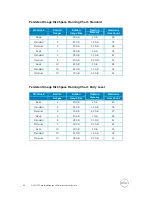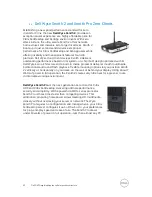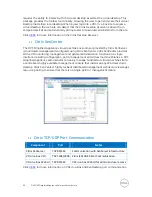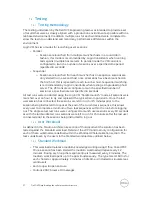
32
Dell DVS Simplified Appliance Reference Architecture
6
End-User Workload Characterization
It is important to understand the user workloads when designing a Desktop Virtualization
Solution. The Dell Desktop Virtualization Solution methodology includes a blueprint
process to assess and categorize a customer‖s environment according to the workloads
defined in this section. In the Dell Desktop Virtualization solution this will map directly to
the SLA levels we offer in our Integrated Stack. There are three levels, each of which is
bound by specific metrics and capabilities.
6.1
Characterization Overview
6.1.1
Basic Workload Characterization
The Basic User workload profile consists of simple task worker workloads. Typically
a repetitive application use profile with a non-personalized virtual desktop image.
Sample use cases may be a kiosk or call-center use cases which do not require a
personalized desktop environment and the application stack is static. In a virtual
desktop environment the image is dynamically created from a template for each
user and returned to the desktop pool for reuse by other users. The workload
requirements for a basic user is the lowest in terms of CPU, memory, network and
Disk I/O requirements and will allow the greatest density and scalability of the
infrastructure.
User
Workload
VM
Memory
Allocation
VM Memory
Reservation
User Data
Disk Space
OS Image Notes
Basic
1GB
0.5GB
5GB
This user workload leverages a shared
desktop image emulates a task worker.
Only two apps are open simultaneously
and session idle time is approximately one
hour and forty-five minutes.
6.1.2
Standard Workload Characterization
The Standard User workload profile consists of email, typical office productivity
applications and web browsing for research/training. There is minimal image
personalization required in a standard user workload profile. The workload
requirement for a Standard User is moderate and most closely matches the majority
of office worker profiles in terms of CPU, memory, network and Disk I/O. This will
allow moderate density and scalability of the infrastructure.
















































